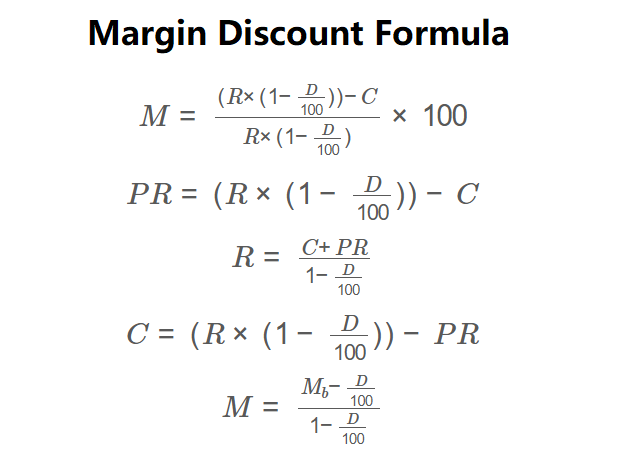 Home
Home
 Back
Back

Definition: The Margin with Discount Calculator computes the profit margin, revenue, cost, or profit after applying a discount to the revenue, based on any two known values, helping businesses assess profitability with discounted pricing.
Purpose: This tool assists businesses in setting prices, understanding the impact of discounts on profitability, and optimizing pricing strategies to maintain desired margins.
The calculator uses the following formulas:
\( M = \frac{(R \times (1 - \frac{D}{100})) - C}{R \times (1 - \frac{D}{100})} \times 100 \)
\( PR = (R \times (1 - \frac{D}{100})) - C \)
\( R = \frac{C + PR}{1 - \frac{D}{100}} \)
\( C = (R \times (1 - \frac{D}{100})) - PR \)
\( M = \frac{M_b - \frac{D}{100}}{1 - \frac{D}{100}} \)
Where:
Steps:
Calculating margin with a discount is essential for:
Example: Calculate the profit margin for a product with a cost of $60, revenue of $100, and a 10% discount:
Q: What is profit margin with discount?
A: Profit margin with discount is the percentage of discounted revenue that remains as profit after subtracting the cost of goods sold, reflecting profitability after discounts.
Q: How does a discount affect profit margin?
A: A discount reduces revenue, lowering the profit margin unless costs are adjusted, as the profit is calculated on the discounted revenue.
Q: How can businesses use discounts effectively?
A: Businesses can use discounts to attract customers and clear inventory but should calculate the resulting margin to ensure profitability is maintained.